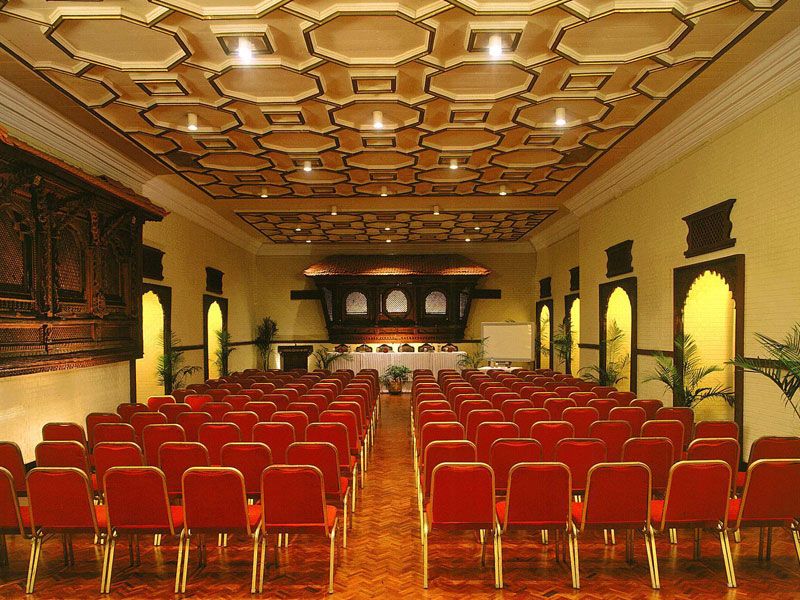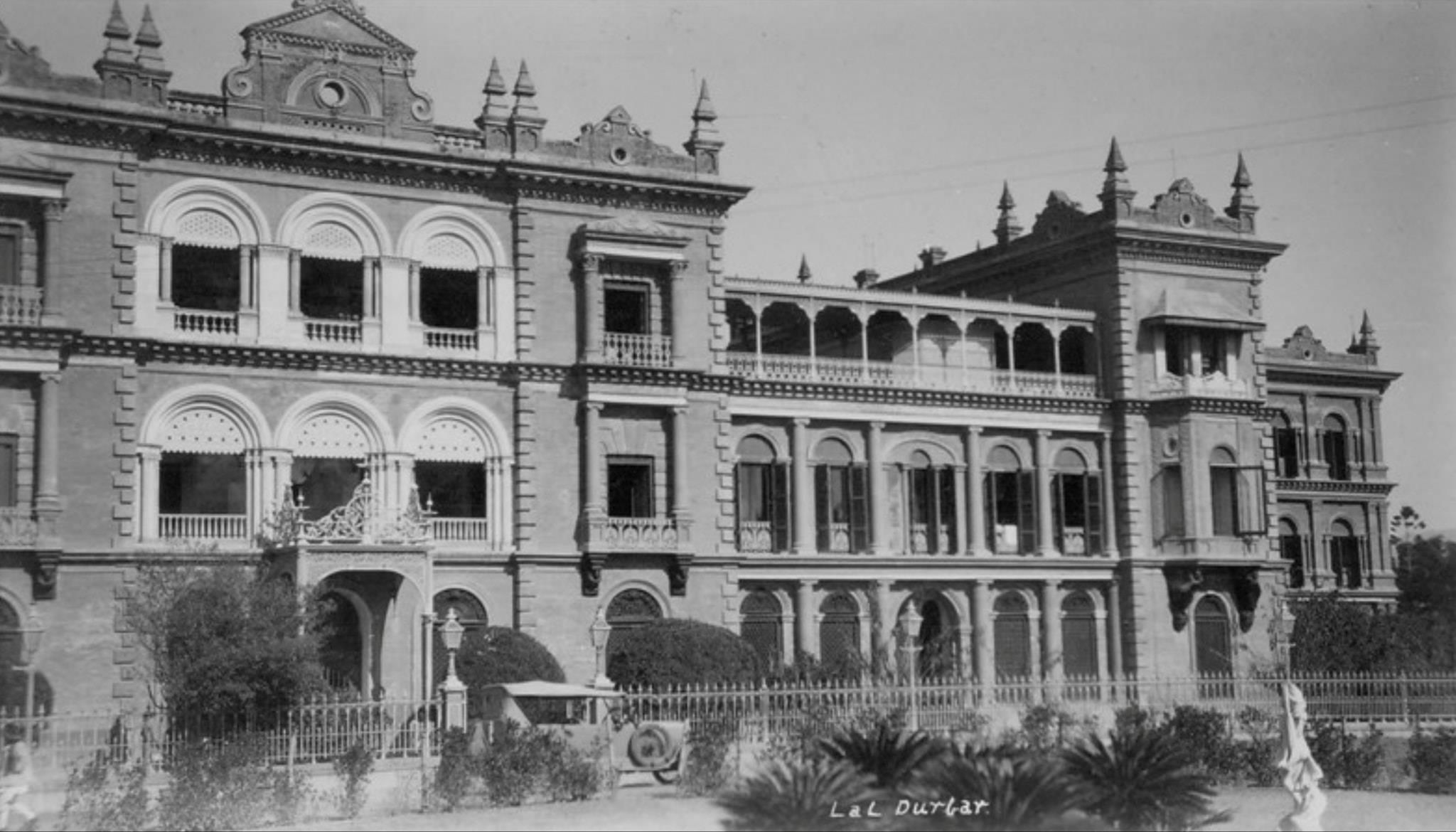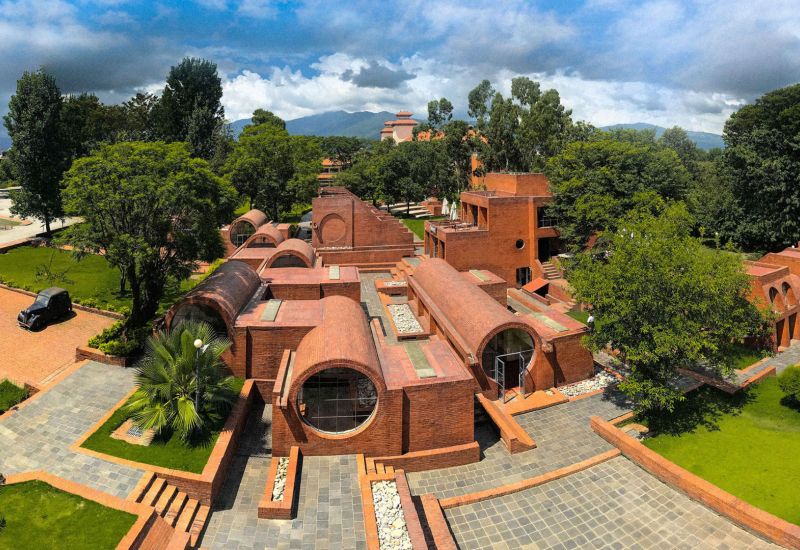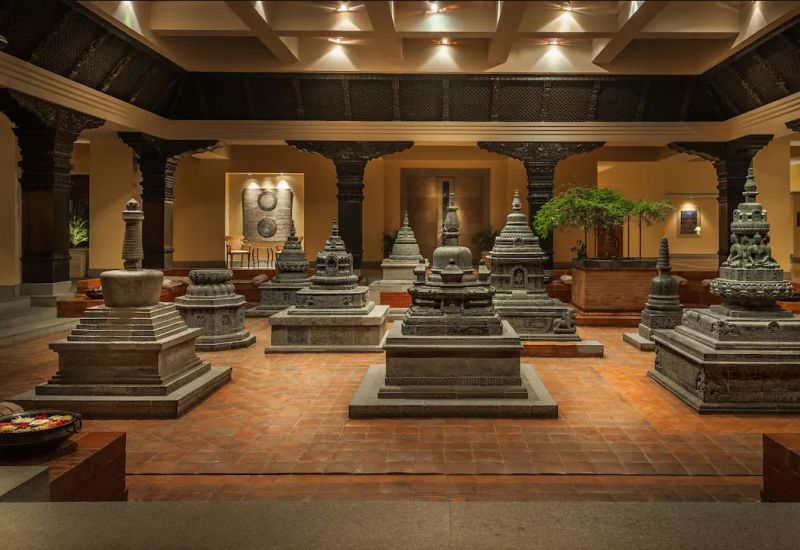
Today, the Lal Durbar is one of the most dynamically restored Rana Palace in Kathmandu, at par with the Vailathi Baithak in Singh Durbar.
A symbol of colonial architecture, Lal Durbar embodies Neoclassical, European, and Persian styles, constructed with indigenous materials from Nepal. Lal Durbar was built by the distinguished Prime Minister Bir Shumsher Jung Bahadur Rana, in 1890, for his eldest son, Rudra, as a theatre and residence.
With time, this property was fragmented and divided amongst his descendants, succumbing to temporal ruin, until the Saraf family acquired each estate, and subsequently initiated a large-scale restoration project. This acquisition period lasted nearly forty years. Over the years, renovations took place at different periods, in parallel with renovations of the Yak and Yeti Hotel.
In 1923, the northern wing of the palace was damaged by a fire, and in 1934, it was further eroded by the earthquake. This palace was partially restored in 1976, and portions of the northern wing were converted into banquet rooms for the Yak and Yeti Hotel.

In 1990, the next phase of restoration began – focusing on the central portions of the Lal Durbar, and the opening of a casino. Under the guidance of Eric Theophile, the main façade was restored in 1999, and a new ballroom was constructed in the second courtyard. In 1996, Theophile supervised the remodeling of the second floor, and the attic was partially reconstructed. The pinnacles of the palace buildings – that were lost due to the 1934 earthquake – were also carefully restored.
In 2015, this second floor suffered damage due to another earthquake, thus requiring restoration again. More recently, our restoration project focuses on strengthening the structure without affecting the authentic aesthetic of the palace, whilst salvaging and re-using as much of the original materials as possible. Thus, by reusing the materiality of the original structure, it has now been transformed into a living space of history, one that actively functions in our contemporary.
For instance, the Regency Hall is preserved, accessible, and adorned with antique mirrors and murals whereas the Dynasty Crystal Hall – formerly aprivate meeting room of the Rana Rulers – is now decorated with exquisite antique chandeliers, mirrors, and portraits of the royal family.
This dynamic restoration of Lal Durbar creates a space for current and future generations of Nepal to recognize, learn, and admire the tradition, labour, and skills of their ancestors, who creatively adapted various architectural styles – Neoclassical, Baroque, and Industrial amongst others – whilst retaining a strong fidelity to their indigenous knowledge and craft.

- +977-01-5178105
- Boudhanath Sadak, Kathmandu 44600, Nepal



